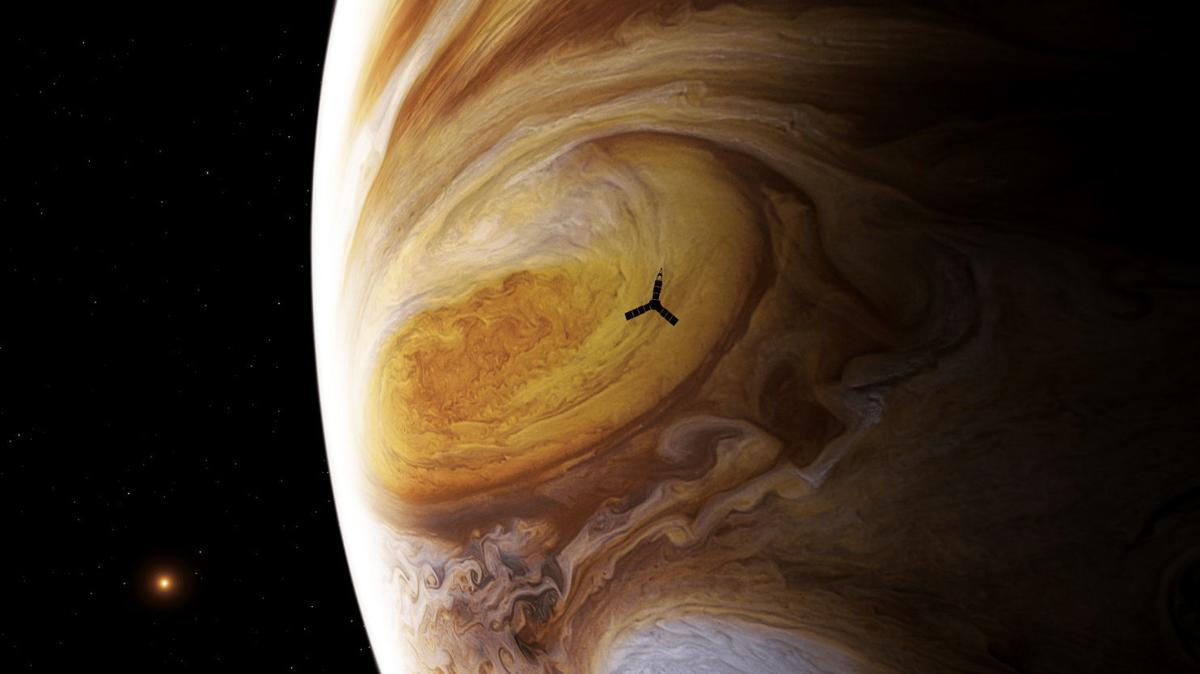when simulations and the media collide

Contrary to an article in New Scientist, the question of whether Jupiter was hit by an extremely massive and dense rocky world during the birth of the solar system is far from settled. You wouldn’t know it by the title of the write-up, but the only evidence of this scenario comes from a simulation of what could’ve happened if a planet with roughly ten times the mass of the Earth slammed into Jupiter’s atmosphere. Simulations are a great tool to figure out how something that we know happened may have unfolded in the absence of some intermediary steps, and to get a handle on the numbers and dynamics involved for additional research, but in this case, the simulation is a what-if exercise to see if an idea being suggested is even plausible. Remember my rant about the media’s irresponsible and schizophrenic coverage of science? Yeah, I’m going to point to that again as a sign that editors just don’t seem to want to understand the basic need for responsible science reporting.
So what’s the whole reason behind the issue of whether a massive, rocky world collided with Jupiter when the solar system was young? Well, the gas giant might be the biggest thing in the solar system besides the Sun, but according to most measurements, it seems to have a relatively small core for its size while Saturn, which is the second biggest planet, has a much heavier core despite basically being a giant puff ball that could float on water due to its low density. So what does that tell us about these planets’ formation? Well, we’re not really sure. That’s why the Jovian anatomy is still being measured and re-measured in planetary science and why a team of scientists in China wanted to see if a big enough collision could shed some light on the issue…
Jupiter and Saturn are thought to have begun life as rocky worlds with the mass of at least a few Earths. Their gravity then pulled in gas from their birth nebula, giving them dense atmospheres. In this picture, all gas giants should have cores of roughly the same size. Yet gravity measurements suggest Jupiter’s core weighs just two to 10 Earth masses, while Saturn’s comes in at 15 to 30.
Simulations by Shu Lin Li of Peking University in China, and colleagues, may explain why. They calculated what would happen when a super-Earth of 10 times the mass of our planet slammed into a gas giant. The rocky body flattened like a pancake when it hit the gas giant’s atmosphere, then barreled into the giant’s core about half an hour later. The energy of the collision could have vaporized much of the core.
Notice the huge margins of error in measurements of the gas giants’ cores. How accurate could a simulation be when we don’t really have a good enough grasp on the predicted final outcome? Another issue here would be where a super-Earth would form without sending the entire inner solar system in disarray. It would have to form relatively close to the Sun because that’s where the metals and silicates it would need are, then migrate close enough to Jupiter in an eccentric orbit and were it at any point to come close to say, Earth, there’s a very high likelihood that it could send our infant world plummeting towards its parent star, or into an awkward orbit, or even hurl it out of the solar system altogether. Since a super-Earth would take quite a while to gain its mass and solidify, the odds of such an encounter are very much non-trivial. And while it’s all well and good to create a mathematical collision on a computer, we need to take into account the big picture, something that seems missing from both the simulation, and the New Scientist article speculating on it.





